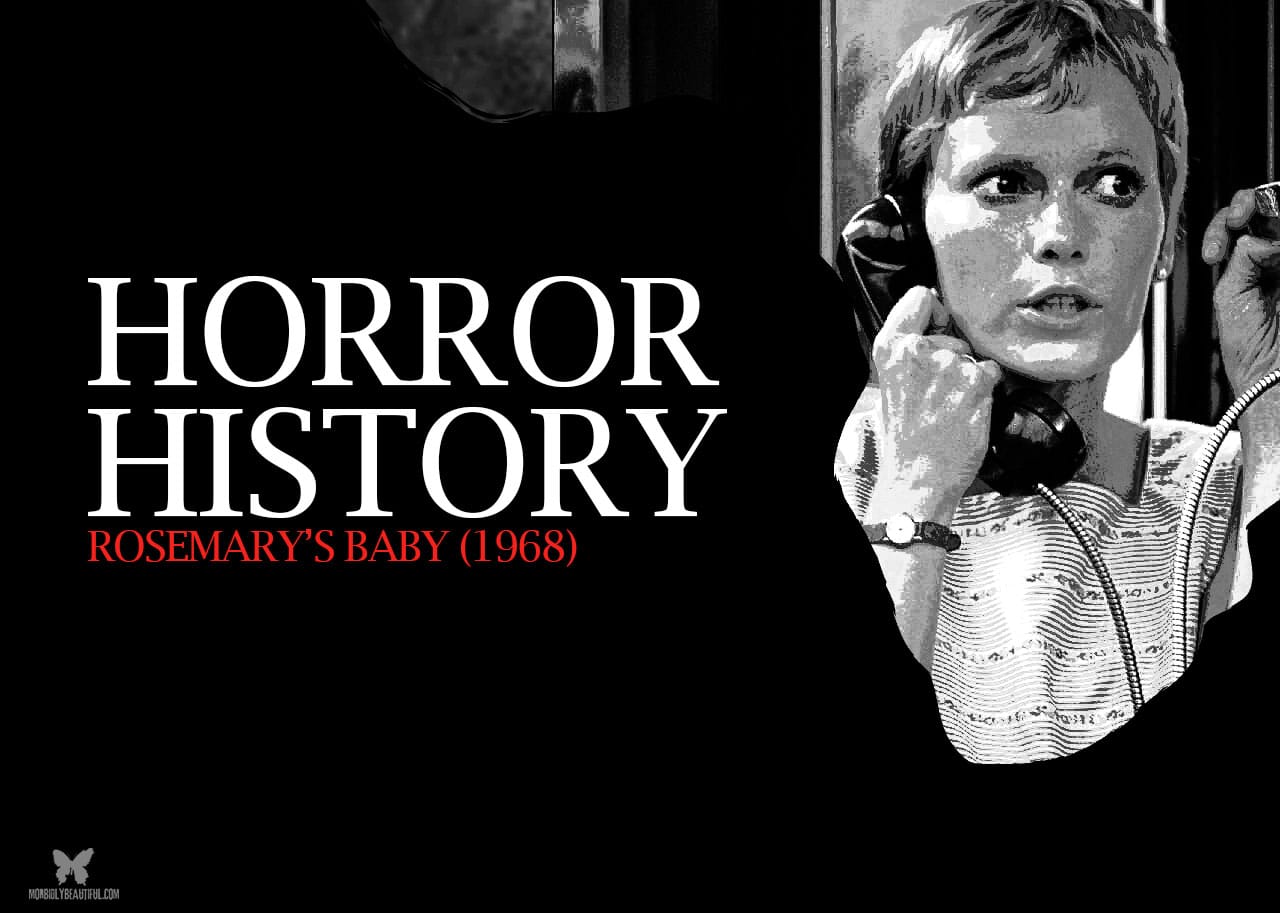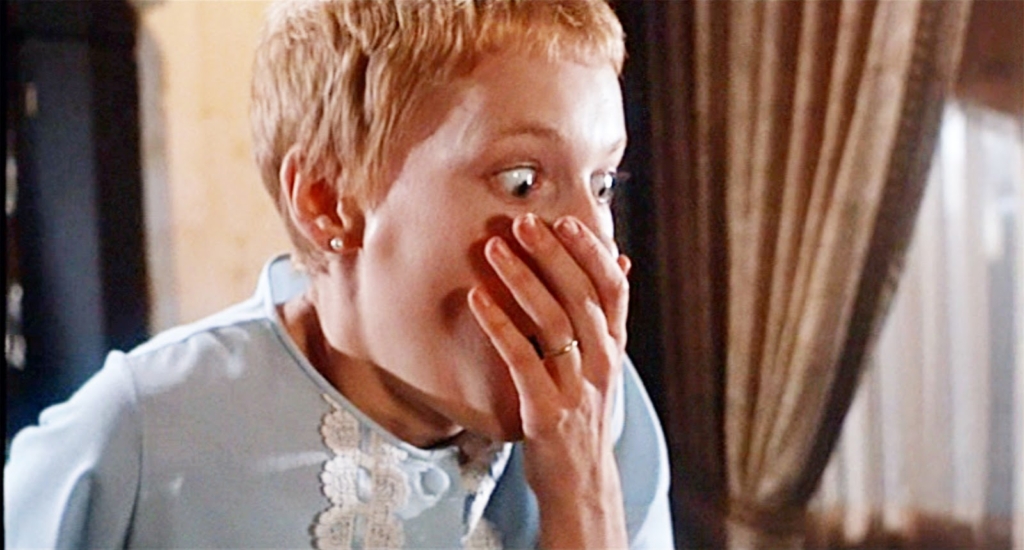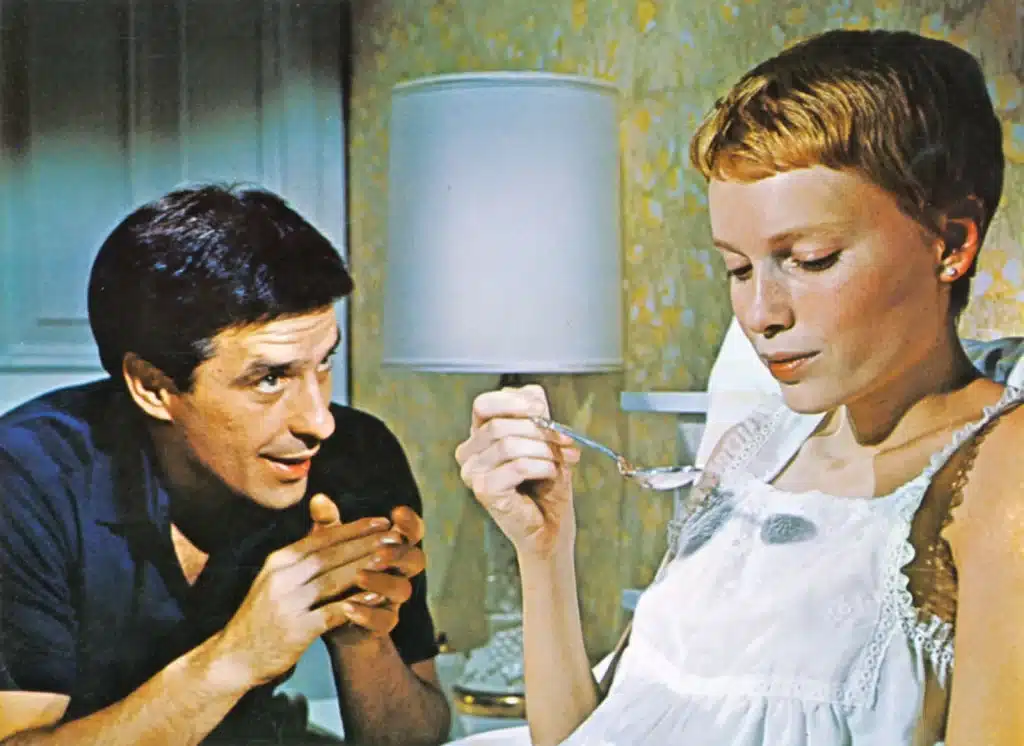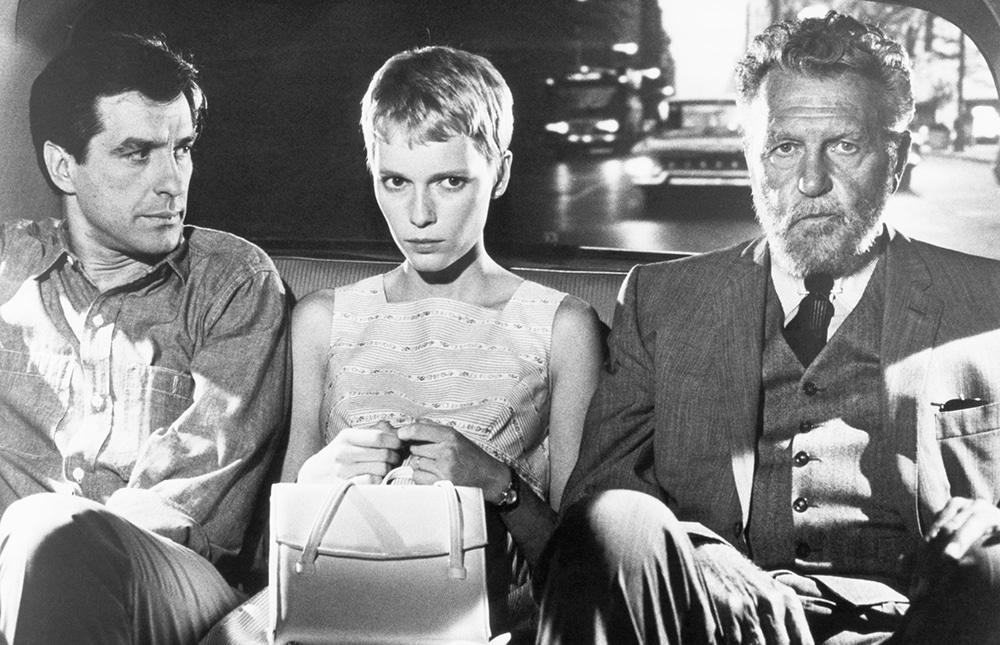Despite the controversy surrounding the director, “Rosemary’s Baby” is a genre classic and a profound commentary on human nature and society.
Released on June 12th, 1968, Rosemary’s Baby is widely regarded as one of the best horror movies of all time.
Based on Ira Levin’s 1967 novel of the same name, the film follows Rosemary Woodhouse (Mia Farrow), the wife of a struggling actor, Guy (John Cassavetes). After they move into The Bramford, an upscale apartment building with a dark past, things start to change. They become friends with their eccentric neighbors, Roman and Minnie Castevet (Sidney Blackmer, Ruth Gordon). When Rosemary finds out she’s pregnant, her happiness is short-lived. Although Guy is suddenly more successful, Rosemary suspects things aren’t what they seem.
Rosemary’s Baby is a masterpiece of psychological horror that relies more on subtle hints, suggestive imagery, and atmospheric tension than on explicit gore or violence.
Roman Polanski’s masterful direction and solid cast performances invite the viewer into the mind of the main character, a woman being manipulated and abused to the point where she begins to question reality. The story plays with the darkest corners of the imagination that question the seemingly mundane veneer of everyday life.
The film was both a critical and commercial success at the time, grossing over $30 million at the box office in the United States. It also received many accolades, including two Academy Award nominations and multiple Golden Globe nominations. Ruth Gordon won an Academy Award and Golden Globe for Best Supporting Actress.
The Library of Congress selected Rosemary’s Baby for preservation in the United States National Film Registry as being “culturally, historically, or aesthetically significant.”
Rosemary’s Baby can be seen as both a reflection and a challenge of the social and cultural context of its time.
Released during a time of political and social upheaval, the film explores themes such as religion, the women’s movement, and counterculture through its characters and plot.
For example, Rosemary represents a woman who wants to assert her independence and identity in a patriarchal society that oppresses and exploits her. Guy represents a man who sells his soul to the devil for fame and fortune in a corrupt and competitive industry. The Castevets manipulate Guy using his desire for fame and fortune, and in turn, they all exploit Rosemary. She’s drugged and delivered into the hands of the devil, raped and impregnated against her will.
The Satanic themes were also timely. Cults were everywhere during the late 1960s. Society was changing, and people were questioning the rigid conformity of the 1950s.
The cover story of Time Magazine’s April 8, 1966 issue was “Is God Dead?” and shortly after, later that month, Anton LaVey founded the Church of Satan in San Francisco. LaVey declared that 1966 was “the year one,” which Levin used in his novel.
In the film, during a New Year’s celebration, Roman Castevet makes a toast to “The year one.” The Castevets are devout Satanists who use their religious beliefs to control Guy and have him take control of his wife’s body for their own purposes.
In the 2003 New American Library edition of Rosemary’s Baby, Ira Levin wrote:
“I was struck one day by the thought . . . that a fetus could be an effective horror if the reader knew it was growing into something malignly different from the baby expected. Nine whole months of anticipation, with the horror inside the heroine!”
In the novel, he gives Rosemary the due date of 06/06/66 in reference to the infamous number of the beast in the Book of Revelation.
By the time Rosemary’s Baby was circulating around Hollywood, his novel 1953’s A Kiss Before Dying had already been made into a film starring Robert Wagner and Joanne Woodward. Levin also wrote another horror novel with strong feminist themes, 1972’s The Stepford Wives, which was also adapted into the 1975 film of the same name starring Katharine Ross.
Before Roman Polanski sat in the director’s chair, William Castle and Alfred Hitchcock both had the chance to option the screen rights to Rosemary’s Baby. Hitchcock rejected the idea. However, Castle, who usually produced and directed low-budget moves, saw Rosemary’s Baby as an opportunity to prove that he could do a big-budget film.
Castle put his house up for a mortgage and purchased the rights for $100,000 plus another $50,000 if the novel made the bestseller lists. (It did, with 2.5 million copies sold before the movie’s release.)
Robert Evans, a former actor with no producing experience, partnered with Paramount and was on the lookout for fresh and innovative ideas.
When he heard that Castle had acquired the book rights, he took the opportunity to collaborate with him on the project.
Although Castle was eager to direct, Evans and Paramount’s head Charlie Bluhdorn wanted Roman Polanski, a rising star who had demonstrated his ability to handle the challenging themes and complex tones of Levin’s work with the critically acclaimed films Repulsion and Cul-de-Sac.
At first, when Polanski read Rosemary’s Baby, he thought it was like “a kitchen melodrama, you know, for television.” However, as he continued reading, he couldn’t put it down.
By the time he finished, he was convinced that it had movie potential. Castle was convinced to let Polanski direct. He told Bludhorn: “Charlie, you were right; Roman Polanski is the only one who can direct Rosemary’s Baby.”
Mia Farrow was the first choice to play Rosemary.
Farrow had played a virginal character named Allison MacKenzie on the show Peyton Place which made her a perfect fit for Rosemary in Evans’, Castle’s, and Levin’s eyes. However, Polanski thought she was too “ethereal” and wanted someone more “earthy” like Tuesday Weld or Jane Fonda. He eventually changed his mind after meeting Farrow and seeing her screen test.
Rosemary’s Baby is not only a classic horror tale but also a profound commentary on human nature and society.
The film influenced many later films in the horror genre — especially those that dealt with similar themes of demonic possession, pregnancy, and cults — including The Exorcist (1973), The Omen (1976), and The Wicker Man (1973).
Rosemary’s Baby has left a lasting impact on the horror genre and the film industry in general. The film is a brilliant adaptation of Levin’s novel that showcases Polanski’s talent as a director and writer. Farrow, Gordon, Cassavetes, and Blackmer bring their characters to life with realism and nuance.
Various cinematic techniques create a sense of paranoia, claustrophobia, and ambiguity that keeps the viewer on edge throughout.
The film also reflects and challenges the social and cultural context of its time while still resonating with contemporary issues and audiences; it taps into timeless fears and anxieties that remain relevant today.



















Follow Us!